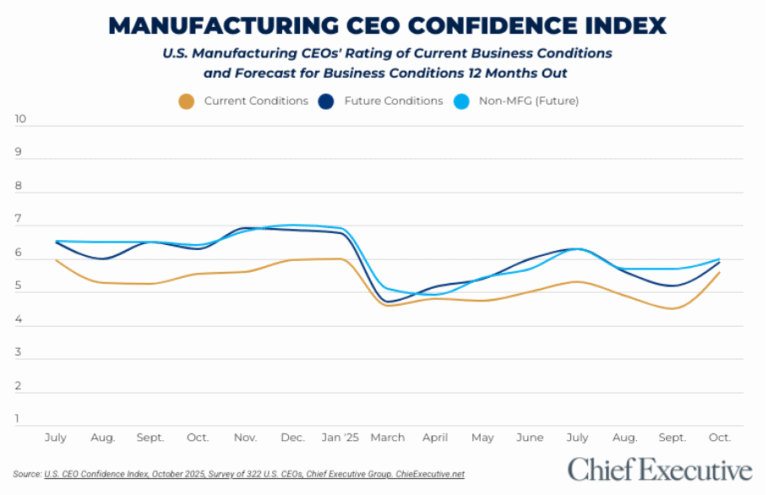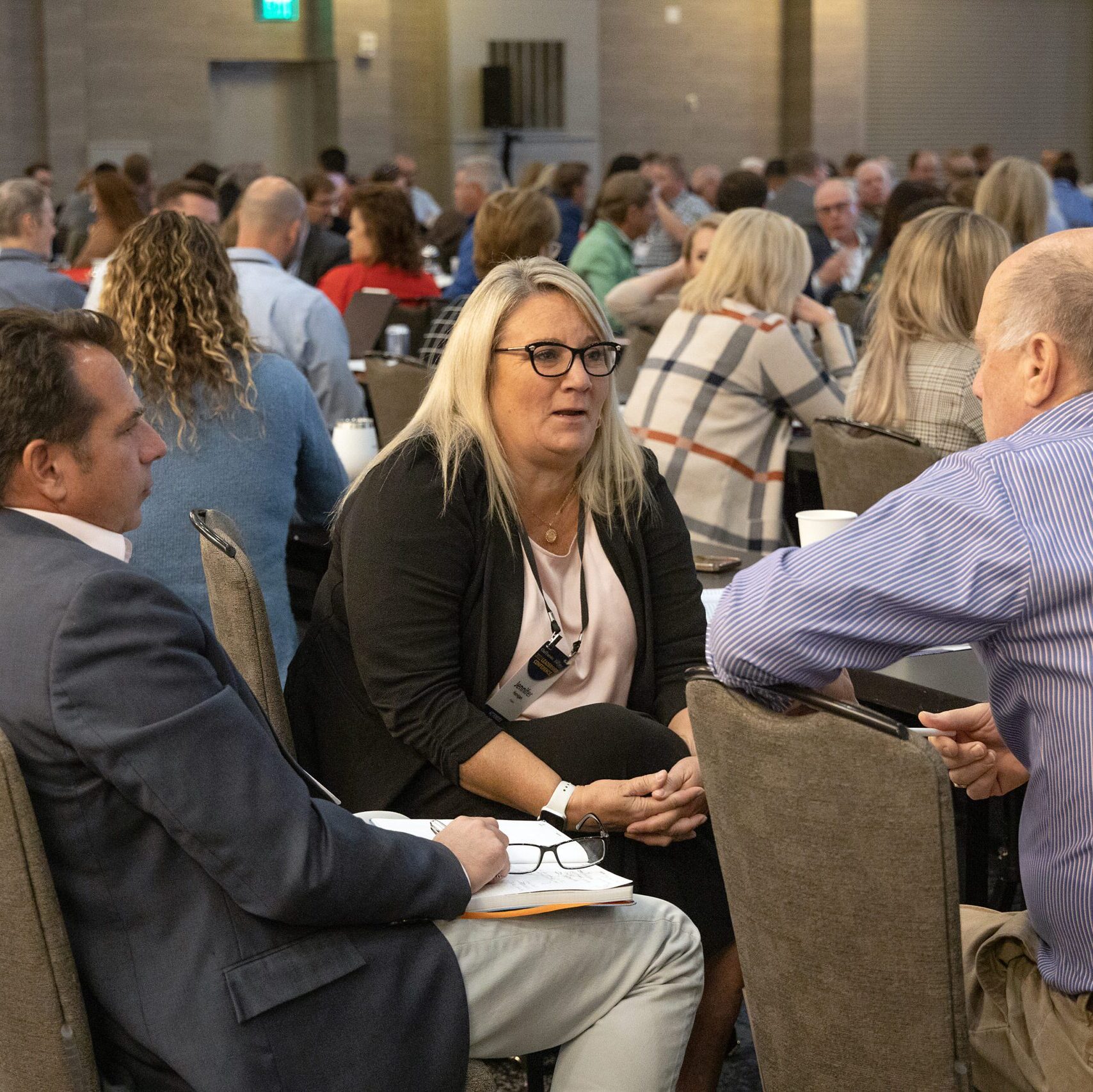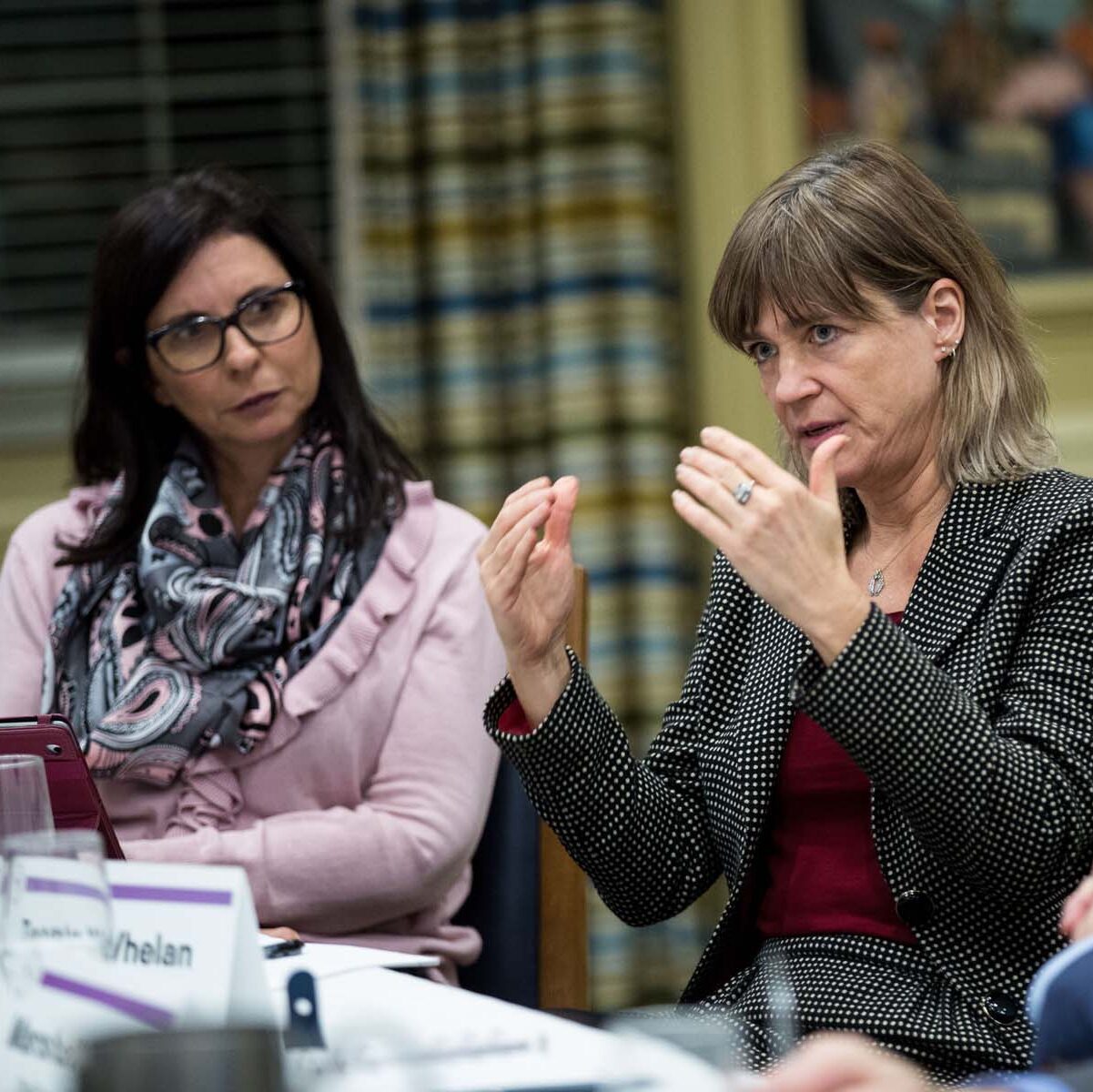


The Trump administration has ushered in new round of uncertainty for global manufacturing, with shifting trade policies, tariffs and geopolitical tensions threatening supply chains. For companies reliant on international suppliers, these disruptions pose serious risks to cost structures and operational stability. In a recent conversation with Chief Executive, Kerim Kfuri, CEO of the Atlas Network and author of Supply Chain Ups and Downs, had tips for how you can navigate these turbulent times with strategic foresight and flexibility.
Kfuri, who has been counseling companies on supply chain resilience and logistics for more than 20 years, will be one of the keynote speakers at our upcoming Manufacturing Leadership Summit in Cleveland, Ohio May 7-8. His big message to manufacturers: Don’t just react to whatever the Trump administration is saying or threatening this week. The current geopolitical landscape requires more than short-term measures. Instead, companies must develop multi-layered strategies that balance short-term risk management with long-term resilience.
From tariff negotiations to supply chain diversification and technological investments, Kfuri outlined several keys for C-Suite executives preparing for the next era of global trade:
Be realistic about global trade’s future. “We are a nation that is operating in the global economy and have been doing so for the past, let’s call it, 50 to 100 years, where so much of what we facilitate or work within as far as products are concerned are not coming from our own backyard,” said Kfuri. “Although we want to take an aggressive stance in the global economy, we can’t be insular in our thinking. We have to maintain this idea of global citizenship as it relates to business and transacting.”
Renegotiating supplier agreements to absorb tariffs. One of the first steps manufacturers should take is engaging in direct conversations with long-term suppliers about cost-sharing to ride out tariffs. “If you have a long-term relationship with your manufacturing partners and you have excessive tariffs or other disruptions at play, conversations need to be had around their absorption of these tariffs or a certain portion of them,” Kfuri explained. “Some suppliers, because of the scale and duration of their relationship, will say, ‘Hey, we will make less or weather this storm for a period of time with you.’”
Be realistic about alternative sourcing and manufacturing locations. Companies that relied heavily on China have, of course, been looking for ways to diversify their supply chains, nearshoring, friend-shoring, shifting production to Vietnam, Mexico and even Africa. Keep going. But also be real about the costs and challenges of transition. “If you shift over to a new nation, maybe they don’t have the skilled workforce to produce the products that you want at the quality you need,” Kfuri noted. “If you have a 30 percent, 50 percent or 60 percent defect rate, the cost structure may end up being worse than keeping manufacturing where it is.” Even with tariffs.
Utilizing tariff engineering to reduce costs. Companies can mitigate soaring import taxes through strategic classification of imported goods. “Different products fall into different categories and then subcategories, and believe it or not, there could be widely ranging tariffs applied to one code versus another,” Kfuri explained. “There’s an entire industry surrounding the reclassification of harmonized tariff codes to ensure compliance while minimizing tariff impact.” Similarly, he highlighted how companies can reduce tariffs by importing components instead of finished goods, then assembling products domestically.
Audit for vulnerabilities. Even if they’ve done this before, get your team to audit or re-audit your supply chain routinely to understand where all your components come from, SKU by SKU. Things are changing fast. What are the potential threats to sourcing at this level? Where could things go wrong? “Understand where you are a little bit too heavy—too many eggs in one basket. Look at what could be the worst case outcome in those scenarios that you either don’t have access to those products anymore, or the costs become exorbitant. If you find that you have a high percentage of goods or services products that fall into these categories, you need to be looking at diversification.”
Build redundancy and diversification. A single-source supply is no longer a viable strategy. Instead, companies need contingency plans with multiple suppliers and manufacturing sites. He compared this approach to financial investing, where a diversified portfolio reduces risk exposure. “None of my larger-scale clients have ever relied on just one supplier,” Kfuri said. “They’ve always had redundancy plans because at any moment, a supplier can break down, change their cost structure or have quality issues. Diversification is key to weathering storms.”
Don’t get caught short. As you engineer changes to your strategy, Kfuri reminds that you need to ensure that you have enough materials on hand for that interim period of development or redevelopment or diversification. “If you look ahead and you say, ‘you know what, we have to have products on hand for the next year in order for us to like figure out where we’re going to be in the next year.’ That’s about cost management and inventory management, where you may take a little bit more than you usually would in your buying cycle as a hedge to buy time.”
And, finally, get your team—and yourself—to be okay living with permanent disruption. Supply chains will remain volatile, and manufacturers must adjust their expectations accordingly. “It is about having proper processes and strategies in place to operate in an environment where the only consistency is inconsistency,” Kfuri said. “You need to be resilient, adaptable and always looking at the possibilities of change. If you’re relying on a single supplier and assuming everything will stay the same, you’re setting yourself up for disaster.
“You need to look at your existing product line and understand where you are too reliant on a single supplier or region,” he added. “Start building redundancies, optimizing logistics and leveraging technology now. The companies that proactively prepare will be the ones that thrive in the era ahead.”




0

1:00 - 5:00 pm
Over 70% of Executives Surveyed Agree: Many Strategic Planning Efforts Lack Systematic Approach Tips for Enhancing Your Strategic Planning Process
Executives expressed frustration with their current strategic planning process. Issues include:
Steve Rutan and Denise Harrison have put together an afternoon workshop that will provide the tools you need to address these concerns. They have worked with hundreds of executives to develop a systematic approach that will enable your team to make better decisions during strategic planning. Steve and Denise will walk you through exercises for prioritizing your lists and steps that will reset and reinvigorate your process. This will be a hands-on workshop that will enable you to think about your business as you use the tools that are being presented. If you are ready for a Strategic Planning tune-up, select this workshop in your registration form. The additional fee of $695 will be added to your total.

2:00 - 5:00 pm
Female leaders face the same issues all leaders do, but they often face additional challenges too. In this peer session, we will facilitate a discussion of best practices and how to overcome common barriers to help women leaders be more effective within and outside their organizations.
Limited space available.

10:30 - 5:00 pm
General’s Retreat at Hermitage Golf Course
Sponsored by UBS
General’s Retreat, built in 1986 with architect Gary Roger Baird, has been voted the “Best Golf Course in Nashville” and is a “must play” when visiting the Nashville, Tennessee area. With the beautiful setting along the Cumberland River, golfers of all capabilities will thoroughly enjoy the golf, scenery and hospitality.
The golf outing fee includes transportation to and from the hotel, greens/cart fees, use of practice facilities, and boxed lunch. The bus will leave the hotel at 10:30 am for a noon shotgun start and return to the hotel after the cocktail reception following the completion of the round.